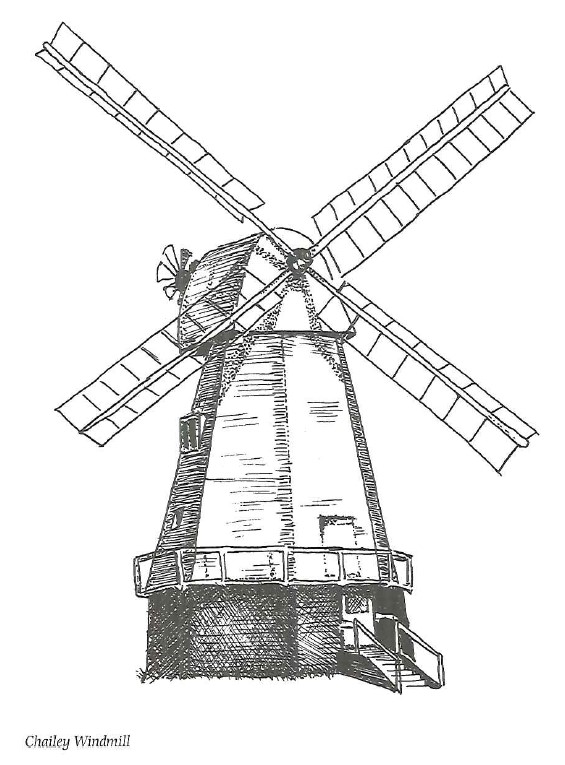The children at the village primary school have good reason to remember the Jolly Butcher of Fletching with affection. Leonard Allcorn, who died at the age of 74, stated in his will that £200 of his estate be used to give the local youngsters a bumper party. His wish was duly observed with mountains of cakes and jelly, plus a special musical performance from a theatre company.
Mr Allcorn also left a legacy for sausage lovers. His famous *herbie’ pork variety put the village on the map, with people travelling many miles to stock up, and the recipe was passed on to his successor behind the butcher’s counter, Mr Graham Smith.
Fletching Bonfire Society may be one of the smallest in the county but it has a history stretching back more than a century. Every year on a November night the old houses of the Compact village street glow in the light of a hundred torches and monstrous shadows are thrown on the walls as the bonfire revellers march in procession to the site of the blaze and firework display. Fletching’s members lead the way, dressed in uniforms of the American Civil War, and they are followed by the gaily dressed members of the visiting societies who come along to give their support and make the evening a success.
A tradition that has died used to be observed on May Day when the children had a holiday and went round the village with flower-decked maypoles singing “Maypole, Maypole, please remember the Maypole’ and were given money for their creations. They later trooped across to Sheffield Park where the maypoles were laid on the lawn and judged by Lord Sheffield.
Edwardian childhood days were recalled by Mrs W. Butcher in a book on the village’s past produced by members of the Forget-Me-Not Club. She wrote: ‘At Splayne’s Green there was an oak tree which we called The Haunted Oak and we used to run like mad past it. I don’t know what we were frightened of; some childish thing I expect. I think it was something to do with the devil.’ Another source of the delicious thrill of fear was the unfortunate Abednego Weston who lived at the Rose and Crown. This funny, nearly square man with hardly any hair’ was teased by the youngsters who called him Mr Bednigo, and he would chase after them as best he could, waving a stick.
Simon de Montfort and his army camped here on the eve of the Battle of Lewes in 1264. They are supposed to have spent the night in vigil before making their way through the dawn countryside to victory on the Downs above the county town, and legend says that those knights who were killed were carried back to Fletching and buried in full armour beneath the church.
In the church, which was new when de Montfort was here, is a tomb which tells a sad little love story. It bears the recumbent alabaster figures of Richard Leche (died 1596) and his wife Charitye, though she was still alive when it was made. After his death she married the second Earl of Nottingham who was as unkind to her as her first husband had been kind. So ‘she of her own accord caused this monument to be made and herself living, to be pictured lying by him as you see.’
There is also a small brass to glover Peter Denot (1450), a supporter of Jack Cade’s ill-fated rebellion, with a simple inscription and a pair of gloves to indicate his trade.
Arrows were the big business here at one time, supplying both the heads and flights to the ammunition that won the battles of Crecy and Agincourt for England. There is nothing to indicate, though, that the village got its name from the fletchers who applied the arrow feathers.
In later years there were several hop gardens in the parish and the school holidays were timed for hop picking, the children lending a hand at earning the money, which went towards winter clothing. Miss D. Martin remembered that at the turn of the century the month long summer holiday was spent every day at Searles hop garden from 8 am until 4.30 pm when the head man cried ‘Pull no more pales. At the end of the season the young pickers were rewarded with a tea party at Mr Maryon Wilson’s riding school.
A more undercover local pursuit is found in the old Sussex proverb: “The people of Fletching live by snapping and ketching. This implies that a fair amount of poaching went on to supplement rural incomes.
